- Home
- Thomas Keneally
Australians, Volume 3 Page 5
Australians, Volume 3 Read online
Page 5
This turbulent and talented man was judged later by the famed critic Robert Hughes as symptomatic of Australia’s cultural problem: ‘Lindsay is the star example of a problem which is peculiar to isolated cultures like Australia’s; he had no sense of history whatever, but he disliked and distrusted the present.’ And increasingly, all around him, Australian artists embraced the modern.
Nonetheless, throughout a long life that ended in 1969, Lindsay’s contempt for modern European art and literature, and his influence on others, was potent but gradually diminishing. By World War II, the new generation of artists, typified by the young Melbourne (Irish) working-class artist Sid Nolan, took no note of him, nor much note, it seemed, of Meldrum. Nor indeed had Lindsay delayed the modern Australian painters of his own generation. These included Roy de Maistre, friend and mentor to the young Patrick White, who had devised a system called ‘colour music’, which grew from experiments in treating shell-shock victims of World War I with colour therapy; Grace Cossington Smith, who lived on the edges of Sydney but celebrated the city itself (and, in the early 1930s, the unfinished bridge growing from either shore of Sydney Harbour); and New Zealand-born Roland Wakelin, shy, amiable and given to amateur music evenings. They were all influenced by the Impressionists and Cézanne, and experimented with Cubism, to Lindsay the last word in barbarity.
THE WAR CLAIMS POMPEY ELLIOTT
One of the most notable post-war victims of war trauma was General Harold Edward Elliott, known to everyone by the nickname ‘Pompey’. He was beloved by the men of the 15th Brigade AIF, even though some of them had tangled with him towards the war’s end over the amalgamation of casualty-reduced battalions and various disciplinary matters. Because of Elliott’s humanity and his willingness to be in the front line, his repute was pervasive amongst the soldiers of the entire AIF. His capacity to speak his mind in graphic terms to senior officers might have damaged his chances of promotion, for he was sometimes the 15th’s father and gang leader as well as its commander.
The son of a Victorian farmer, Elliott was tall, his spirit rugged, and he was the sort of young man upon whom, in terms of temperament, health, intellect and physical power, the gods had smiled. He had interrupted his law studies to serve in the Boer War, but returned to be called to the bar of Victoria and of the Commonwealth. Like his ultimate chief General Monash, he was a student of military texts and history.
Elliott had landed at Gallipoli on the first day, commanding the 7th Battalion. He was wounded and evacuated, then returned in early July, and was with his men in the fighting for German Officers’ Trench. He fought at Lone Pine. Sensitive to the havoc, Elliott developed a dislike of and contempt for the fixed views of professional soldiers that would by war’s end become an obsession. In March 1916, he was given the task of incorporating the 15th Victorian Brigade into the newly formed 5th Division, and promoted to the rank of Brigadier General. At the opening foray at Fromelles his two assaulting battalions suffered 1452 casualties in less than twenty-four hours. Elliott had protested against the uselessness of the assault before it had even occurred, and had taken a major of the British staff to show him the stretch of no-man’s land his men would have to cross if the assault went ahead. He was in the front line at zero hour and later in the day went forward again to visit his front troops before they were pulled back. Arthur Bazley, who worked with C.E.W. Bean, saw him greeting the remnants of his brigade: ‘No one who was present will ever forget the picture of him, the tears streaming down his face, as he shook hands with the returning survivors.’
Later in the day, the martinet General Mackay, Elliott’s divisional commander, found Elliott and General Pope, Commander of the 14th Brigade, drinking together in a dugout and, according to some, tipsy. When Mackay harangued them, Elliott told him, ‘If you had seen what we have in the last day, you’d be drunk too.’ Elliott’s aim from then on was to preserve his soldiers. He visited his front line daily before dawn. He began to enjoy their achievements and to revel in the ground they captured in 1917 and 1918, and was astonished and humbled by the trust they put in him.
Yet, during his time in France, Elliott had received the grievous news that Glen Roberts, his partner in H.E. Elliott and Company, his firm of solicitors, had embezzled a considerable amount of money. ‘Goodness knows what I am liable for,’ he wrote to his wife. His business collapsed and he all at once had a debt of £5000. His brigade’s counter-attack in April 1918 at Villers-Bretonneux was triumphant, but by August 1918 he was wounded, and eroded by resentment that the ‘professionals’ would not give him a divisional command.
On his return home, Elliott revived his business, stood for the Senate as a Nationalist (that is, a conservative) in 1919, and was elected, then re-elected, and served in Parliament for the rest of his life to argue for the constituency of soldiers and their families. He was concerned by the fact that the grandiose wartime promises made to young men were not reflected in the way they were treated after. By 1921, unemployment rates had jumped to 11 per cent due to the lower demand for food and wool in Europe, and ex-Diggers were put off. Often, even in good times, the disabled soldier was the last to be employed—deafness and partial blindness often disqualified him, and so did disfigurements of the face. Men who had suffered shrapnel and gunshot wounds to the hands, injuries they probably greeted on the battlefield as blighties (wounds that reprieved them from the lethal grind of trench horror), now found their capacity for being craftsmen reduced. Conservative governments under the two refugees from Labor—mercurial Hughes and his successor, the by-the-book former officer Stanley Melbourne Bruce, a forerunner of Menzies for his aura of command but with little of Menzies’ vivacity—were reluctant to legislate to force employers to take such men, and so instead merely encouraged them to give former soldiers preference.
It proved a pious hope. Even if employers gave men jobs, they sometimes illegally deducted from the wages the amount of the partial war pensions the men received. Disabled Diggers found some income as lavatory attendants, street hawkers, buskers, dingo and buffalo shooters, and beggars. In the streets, blind soldiers sold their poetry printed on postcards. The Red Cross set up some sheltered factories in weaving, pottery and furniture. Blind soldiers were encouraged to repair boots but were replaced by machines by the end of the 1920s.
All such cases gnawed at Pompey Elliott. In 1920, the royal commission on the basic wage had recommended that a family of four required five pounds, sixteen shillings ($11.60) to live in a ‘reasonable standard of comfort’. In that same year the Australian Soldiers’ Repatriation Act set the full war disability pension rate at four pounds, two shillings and sixpence per week for a comparable household. But well over two-thirds of the disability pensioners received less than half the full amount, even if symptoms remained—loss of power over limbs, the ‘dragging’ pain of gunshot injury, and afflictions of the chest due to gassing.
In arguing these questions, Elliott did not show himself a natural politician. His feelings ran close to the surface, and like many former soldiers he was stunned by how quickly the world had moved on from the war. Convinced like many conservatives that Red revolution was a likelihood in the suburbs and the bush, he continued to serve in the militia but was still passed over for divisional command. He took to attacking the Australian professional soldiers, particularly generals Birdwood and Brudenell White, whom he saw as servants of the British High Command. In 1925, he was at last appointed a major-general, but his wife and children continued to listen to harangues about how belated this was. ‘The injustice,’ he wrote, ‘has actually covered all my post-war life.’
The Depression brought a spiritual depression for Elliott. Once again, having been a Digger counted for nothing to employers, and veterans began to lose the jobs they had found so hard to get when they returned from the war. Elliott grieved for his men. ‘I am at my wits’ end at the present time in finding the opening for the man who gets out of a job,’ he wrote. Nightmares and flashbacks, symptoms of damage done to hi
m years before, plagued him. He also began to fret about the junior officers he had sent out on dangerous missions and who had perished. Acute depression, of the kind that had sometimes afflicted him during the war, now returned. Unveiling the main Ararat War Memorial in August 1930, he wept during his speech. In early 1931, still a member of parliament, he had to be admitted to Melbourne’s Alfred Hospital after what the press called a mental breakdown, but what was in reality an attempt at suicide by putting his head in front of an oven and turning on the gas. His wife and daughter had saved him.
In hospital, everything sharp was taken from him except, by some oversight, his shaving gear. He was found in the small hours of 23 March 1931 with a razor’s blade embedded in an artery in his left elbow. Elliott’s funeral attracted a massive crowd of former soldiers, who knew that he was also one of the fallen.
PLAY TIME
In the arts there remained unfulfilled an Australian desire to surprise the world with something built to the scale of Australia’s newness and uniqueness. The soldiers had wanted to achieve that in Gallipoli and France and Palestine. Artists dreamed of it. One influence the dreaded Irish had on Australian writers was in the emergence of ‘a national Irish literature’, created and catalysed by William Butler Yeats, his longed-for Maude Gonne, and the playwright J.M. Synge (all of them members of the Anglo–Irish establishment but seamlessly Irish in their ambitions). The theatrical headquarters of the Irish Revival had been the Abbey Theatre in Dublin, and some Australians asked why a national Australian theatre could not emerge in some similarly humble venue in Australia.
Not that Australians lacked theatre in general. Robert Helpmann, South Australian son of a stock and station agent, discovered by the visiting British actor Margaret Rawlings when he acted in a pantomime in Melbourne, and ultimately a dancer and actor of international renown, said of his arrival in London in 1932, ‘I had already seen most of the great stars of drama, musical comedy, opera and ballet, all of whom had visited Australia for the Taits—and when they imported a “star”, you could be sure it was a star!’
The Tait brothers and J.C. Williamson were seen as the enemy by those who desired a national theatre. They did encourage (some would say exploit) some local stars, such as the soprano Gladys Moncrieff. As a child in the 1890s and early 1900s, Moncrieff had toured Queensland with her parents by Cobb & Co coaches, coastal boats and trains to entertain remote communities as ‘Little Gladys—the Australian Wonder Child’. Now she began her adult career in the chorus, supporting English principals. A visiting British actor, Seymour Hicks, declared in 1925, ‘The managers here seem afraid to encourage their own people. They prefer to pay expensive fares and inflated salaries to, in most cases, very second-rate English and American artistes.’ The adored Adelaide comedian Roy Rene (real name Henry Vande Sluys), who would work for a number of managements in Melbourne and Sydney and, like Moncrieff, extend his gifts into radio, was another native who got a start just before World War I at such venues as Bain’s Theatre in Railway Square and at Fuller’s National Theatre, both in Sydney. J.C. Bain had earlier given him an apprenticeship touring country towns with ‘tent shows’, troupes of singers, dancers, jugglers, comedians and conjurors that delighted bush audiences, including, on a hot night in Wauchope, New South Wales, the author himself.
Even so, when it came to drama, the complaint was that there was no ‘Australian theatre’; that is, one that celebrated and gave honour to national idiom and the realities of Australian life. To see the origins of the aspiration for a national theatre, as with the artists, we must go back a little in time. Thomas Louis Esson, Edinburgh-born, Melbourne-raised, was the spokesman for such a theatre. When he spoke of national idiom, he did not mean it in some populist, merely picturesque, Sentimental Bloke way. He meant giving Australia its full space and voice in the same way that the writers and institutions of the Irish Revival—again and in particular Yeats and Synge and the Abbey Theatre—had done. In 1908, Spencer Brodney, son of the crusading journalist of Table Talk, would write, ‘Many of us are almost in despair when we see how little relation the theatre in Australia has to the national life of the country. There is no Australian dramatist earning his livelihood by writing for the Australian stage.’
In 1905, Esson, in many ways an unworldly young man, and Brodney had travelled to Europe to look into that question. In Dublin, Esson met Synge, the playwright of The Playboy of the Western World, who urged him to start such a national theatre in Australia. Certainly Brodney and others had been involved in the establishment of such organisations as the Australian Theatre Society, founded in 1904. But there was no focused venue.
Esson and Brodney met Yeats too, and as Brodney would later say, Yeats told them that the Irish Revival had been created by ‘a little band of writers and players gathered together, determined to put Irish life on the stage’. That, said Yeats, was what must be done in Australia: ‘No imitation of English melodramas or Paris farces, no rehash of cloak and dagger plays, no aping of Pinero or Bernard Shaw.’ The Irish had had the same problem as Australia: the theatres owned by outsiders or else by managements were indifferent to the local voice. The Abbey Theatre had shown them what for.
At the same time as he applied himself to the matter of the Australian theatre, Esson was as engaged as any politician in the question of Australia’s vulnerability to Japan, a country he had also visited in 1908. He had earlier written a fine bush poem entitled ‘The Shearer’s Wife’, but in 1910 he joined the Victorian Socialist Party as a foundation member, and moved away from the Bulletin school of nationalism and sentimental invocations of stockmen and shearers. His ‘Brogan’s Lane’ was a verse about inner-city squalor and peril. And if the swagman was to have a place in his writing now, it would be as a man outfacing the ill-will of pastoralists.
They booze to bring joy, they sin to numb pain,
But there’ll come a stretch at the end of the lane,
Brogan’s Lane, Brogan’s Lane,
The river and morgue shadow Brogan’s Lane.
Esson returned to the well of Dublin in 1911, and at the Abbey Theatre, Synge exhorted him again, ‘You ought to have plenty of material for drama in Australia. All those outback stations with shepherds going mad in lonely huts.’ Yeats said, ‘Keep within your own borders. The Greeks kept within their own borders, and they were the greatest artists the world has ever seen.’ Yeats also told Esson that it was ‘no disadvantage that we [the Australians] had no conventionally romantic past to draw on’.
Esson’s first full-length play, The Time Is Not Yet Ripe, staged in 1912, was—despite Yeats’ advice—influenced by Shaw, but it was set in Melbourne and involved a federal election, city socialists arguing with conservatives, women’s rights, all conveyed with regard for Australian idiom. Esson knew that in Australia the idea of a national theatre, even to the few who ever heard about the proposition, generated a resonating indifference. But in 1913, he married a woman who was a true believer, a young doctor, an early woman graduate of the University of Melbourne medical faculty, Hilda Wager Bull, who shared his enthusiasm for the theatre and whose work gave him financial backing as a writer. Esson was rejected for military service and, like Les Darcy, the Irish–Australian boxer, the couple left for New York. Beyond New York, they saw the limitations of American civilisation writ large across the prairies, yet American theatre was strong in New York.
In 1921, they returned to Melbourne reinvigorated and ready to give birth to an Australian national theatre, without excuse, without holding back. They renewed their friendship with the prodigiously cultivated critic Nettie Palmer and her husband, the writer Vance. Nettie, a Victorian whose family was affluent enough to allow her travels in France, England and Germany on the eve of World War I, had met the Queenslander Vance Palmer in England early in 1914 and married him. Vance Palmer was a personable man of letters who, in his youthful travels in Europe, had known such figures as Katherine Mansfield and Ezra Pound. He told Nettie that his most important experience a
t Ipswich Grammar School was meeting cricketer Victor Trumper. But he had also begun to read extensively, European novels and plays he borrowed from the Ipswich School of Arts library. (Indeed, one must face the fact that without schools of arts and their libraries, so important before the days of municipal libraries, the entire temper of Australian life, brusque and brash as it was, would have been of an even lower order.) On their return to Australia, Vance Palmer wrote for Steele Rudd’s Magazine and Rudd published his article ‘An Australian National Art’.
Nettie was a socialist who nonetheless taught at the Presbyterian Ladies College in Melbourne, handsome, a friend remembered, without taking any care to primp herself up, and published in the Bulletin and elsewhere. Neither she nor Vance was rich, and so the couple had need to be industrious writers, but their work promoted rather than created a national literature.
The couple were socialists who suspected Marxism; and having campaigned against conscription, Vance felt—despite the fact that he and Nettie had two infant daughters—that he must make up the numbers on the Western Front. He enlisted, but arrived in France three days after war’s end. He was disillusioned by Australian politics, and by the signs of conflict emerging between trade unions and private armies, which would be a feature of Australian political life from World War I until well into the 1930s. The pastoralists and businessmen behind these sinister armies were an elite who were proud of their lack of cultural refinement. Palmer saw the suburbs and their mindlessness as bringing death to the values of Joseph Furphy’s Such Is Life (1903), the rough socialism of the shearers’ camps.
Vance and Nettie, who loved the theatre, became engaged in the search for a national voice. With the Essons, they formed in Melbourne the Pioneer Players, a theatre without any premises, dedicated to performing Australian plays. Their first performance, in 1922, was of Esson’s The Drovers, an admirable one-acter that dealt with an old Australian preoccupation but in a non-Bulletin manner. Their last production was Esson’s The Bride of Gospel Place in 1926. The experience of the Pioneer Players left Louis Esson demoralised by the small audiences and the lack of support from the well-heeled Melbourne establishment. Esson’s strong-minded wife was not so easily vanquished, but she did go with him into rural exile at Mallacoota, before they moved to Sydney, where Esson would die in 1943, the father of a brave but failed dream.

 Confederates
Confederates Flying Hero Class
Flying Hero Class Gossip From the Forest
Gossip From the Forest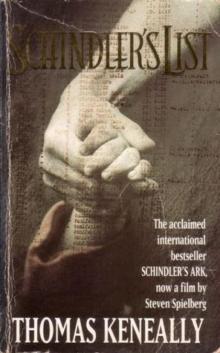 Schindler's List
Schindler's List Bring Larks and Heroes
Bring Larks and Heroes Australians: Flappers to Vietnam
Australians: Flappers to Vietnam The People's Train
The People's Train Crimes of the Father
Crimes of the Father A Family Madness
A Family Madness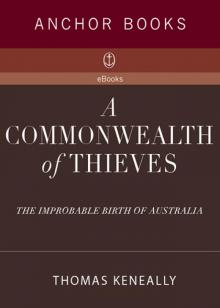 A Commonwealth of Thieves
A Commonwealth of Thieves Ned Kelly and the City of Bees
Ned Kelly and the City of Bees A River Town
A River Town Bettany's Book
Bettany's Book Blood Red, Sister Rose: A Novel of the Maid of Orleans
Blood Red, Sister Rose: A Novel of the Maid of Orleans Victim of the Aurora
Victim of the Aurora American Scoundrel American Scoundrel American Scoundrel
American Scoundrel American Scoundrel American Scoundrel Three Cheers for the Paraclete
Three Cheers for the Paraclete Australians: Origins to Eureka: 1
Australians: Origins to Eureka: 1 The Power Game
The Power Game The Chant Of Jimmie Blacksmith
The Chant Of Jimmie Blacksmith The Daughters of Mars
The Daughters of Mars Searching for Schindler
Searching for Schindler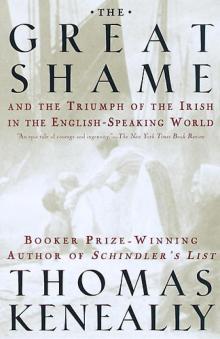 The Great Shame: And the Triumph of the Irish in the English-Speaking World
The Great Shame: And the Triumph of the Irish in the English-Speaking World Abraham Lincoln
Abraham Lincoln The Widow and Her Hero
The Widow and Her Hero Eureka to the Diggers
Eureka to the Diggers Shame and the Captives
Shame and the Captives The Survivor
The Survivor Jacko: The Great Intruder
Jacko: The Great Intruder The Book of Science and Antiquities
The Book of Science and Antiquities Homebush Boy
Homebush Boy The Playmaker
The Playmaker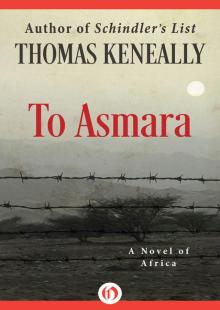 To Asmara: A Novel of Africa
To Asmara: A Novel of Africa A Woman of the Inner Sea
A Woman of the Inner Sea The Tyrant's Novel
The Tyrant's Novel Australians
Australians Schindler's Ark
Schindler's Ark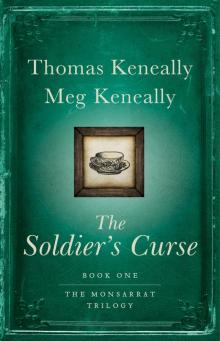 The Soldier's Curse
The Soldier's Curse Australians, Volume 3
Australians, Volume 3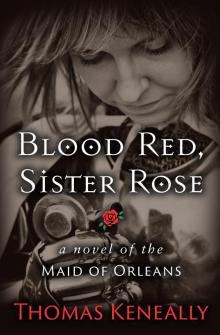 Blood Red, Sister Rose
Blood Red, Sister Rose A Victim of the Aurora
A Victim of the Aurora The Unmourned
The Unmourned Australians, Volume 2
Australians, Volume 2 To Asmara
To Asmara